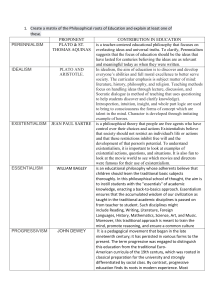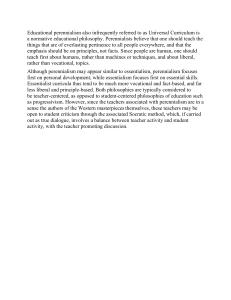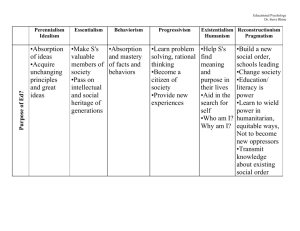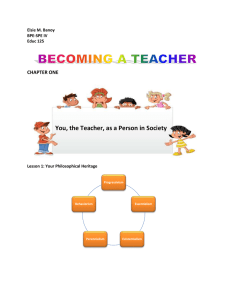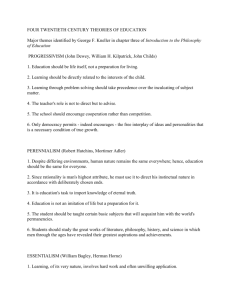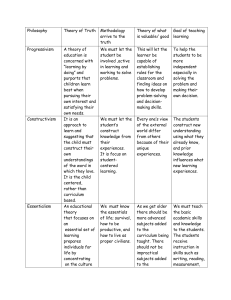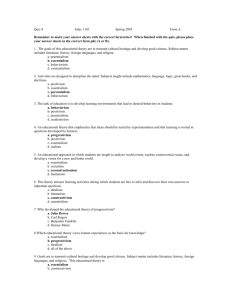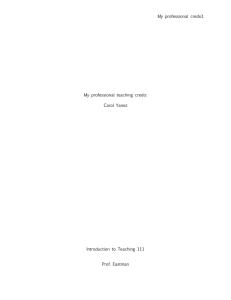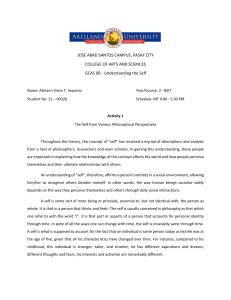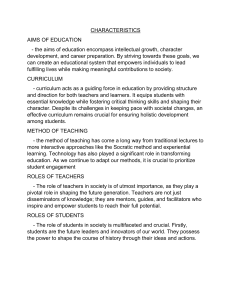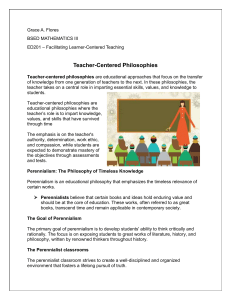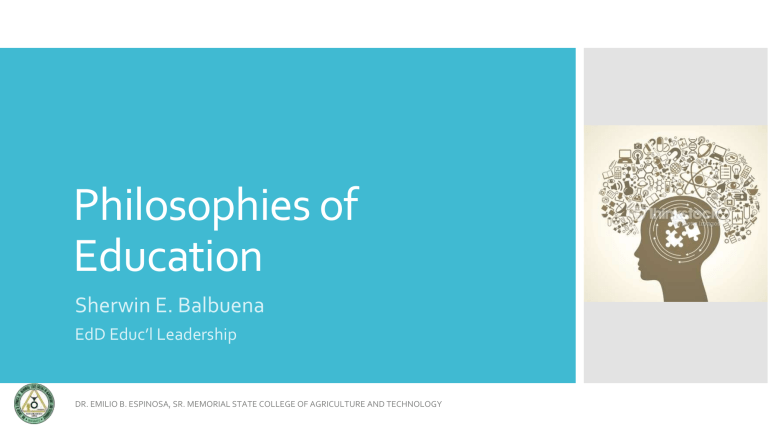
Philosophies of Education Sherwin E. Balbuena EdD Educ’l Leadership DR. EMILIO B. ESPINOSA, SR. MEMORIAL STATE COLLEGE OF AGRICULTURE AND TECHNOLOGY Existential Questions What is life? Who am I? Why am I here? What am I living for? What is reality? Is the universe real? What is good to do? How should I live life meaningfully? In the school context… Why do I teach? What should I teach? How should I teach? What is the nature of the learner? How do we learn? Five Major Philosophies of Education (Bilbao, et al) Essentialism Progressivism Perennialism Existentialism Behaviorism Essentialism Why teach? This philosophy contends that teachers teach for learners to acquire basic knowledge, skills, and values. Essentialism What to teach? Basic skills or the fundamental R’s -reading, ‘riting, ‘rithmetic, right conduct-- as these are essential to the acquisition of higher or more complex skills needed in preparation for adult life. Curriculum includes the traditional disciplines such as math, natural sciences, history, foreign language, and literature. Essentialism How to teach? Essentialist teachers emphasize mastery of subject matter. They are expected to be intellectual and moral models of their students. Progressivism (Pragmatism or Experimentalism) Why teach? Progressivist teachers teach to develop learners into becoming enlightened and intelligent citizens of a democratic society. They teach learners so they may live fully NOW not to prepare them for adult life. Progressivism What to teach? Need-based and relevant curriculum. This is a curriculum that “responds to students’ needs and that relates to students’ personal lives and experiences.” More concerned with teaching the learners the skills to cope change. Change is the only thing that does not change. Natural and social sciences. Teachers expose students to many new scientific, technological, and social developments, reflecting the progressivist notion that progress and change are fundamental. Progressivism How to teach? Progressivists teachers employ experiential methods. They believe that one learns by doing. (John Dewey) Problem-solving method makes use of the scientific method. “Hands-on-minds-on” teaching methodology (e.g., field trips during which students interact with nature or society). Teachers also stimulate students through thought-provoking games and puzzles. Perennialism (Rational Humanism) Why teach? To develop the students’ rational and moral powers. Belief in the primacy of reason and in the human’s ability to make rational judgments about the goodness of things (Adler & Hutchins). Perennialism What to teach? The perennialist curriculum is a universal one on the view that all human beings possess the same essential nature. Heavy on humanities and general education. Great Books. Perennialism How to teach? The perennialist classrooms are “centred around teachers”. The teachers do not allow the students’ interests or experiences to substantially dictate what they teach. They apply whatever creative techniques and other tried and true methods which are believed to be most conducive to disciplining the students’ minds. Existentialism Why teach? To help students understand and appreciate themselves as unique individuals who accept complete responsibility for their thoughts, feelings, and actions. Existence precedes essence. Education of the whole person, not just the mind. Existentialism What to teach? Gives a wide variety of options from which to choose. Emphasis on the humanities. Vocational education to teach children about themselves and their potentials. In the arts, students are encouraged to practice individual creativity and imagination. Existentialism How to teach? Focuses on the individual. Learning is self-paced, self-directed. Individual contact with the teacher. Teachers remain non-judgmental and take care not to impose their values on the students; since values are personal. Behaviorism Why teach? Student’s behavior is a product of his environment. Behaviorism What to teach? Teach students to respond favorably to various stimuli in the environment. Behaviorism How to teach? Arranges environmental conditions so that students can make the responses to stimuli. e.g., well-managed classroom, use of attention catchers and incentives. Summary Other Philosophies (accdg. to Eisner) Reconstructionism/Critical Theory Religious Orthodoxy Reconceptualism Cognitive Pluralism Reflection What philosophies of education do our schools adhere to? In the historical perspectives of our educational system? Thank you! There are as many worlds as there are ways to describe them. NELSON GOODMAN

